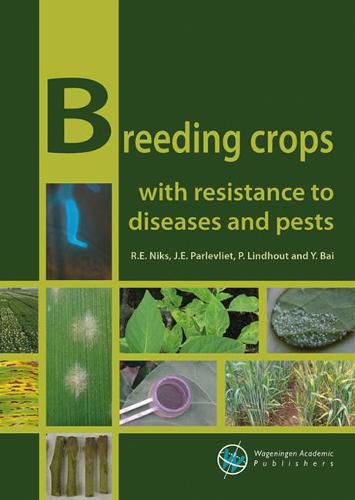Readings Newsletter
Become a Readings Member to make your shopping experience even easier.
Sign in or sign up for free!
You’re not far away from qualifying for FREE standard shipping within Australia
You’ve qualified for FREE standard shipping within Australia
The cart is loading…






‘Breeding crops with resistance to diseases and pests’ is the most up-to-date textbook on this topic targeted towards students in Plant Sciences. This book describes the most basic elements in plant pathogen interactions and defence strategies in plants. The scientific background is explained as far as it is relevant for breeders to make sensible choices in designing and running their breeding work. A major part of the book presents the options plant breeders have to consider such as what strategy to follow, what aspects to evaluate or measure, and whether it is best to apply mixtures of pathotypes or to test pathotypes one by one. Professionals, notably in the field of Plant Breeding, may also use it as a manual for disease resistance breeding. The book should be of interest to anyone interested in plant defence strategies and the enhancement of resistance in modern cultivars. In order to enliven and illustrate the text, background reading, interesting examples and exceptions, concrete cases of application and further reading are given. Supplementary reading is readily distinguished from the main text by a different typography, so it is clear what material is most relevant and what is meant as examples supporting the main story lines. Most sections are followed by exercises so that students can test whether they understood the material that was presented.
$9.00 standard shipping within Australia
FREE standard shipping within Australia for orders over $100.00
Express & International shipping calculated at checkout
‘Breeding crops with resistance to diseases and pests’ is the most up-to-date textbook on this topic targeted towards students in Plant Sciences. This book describes the most basic elements in plant pathogen interactions and defence strategies in plants. The scientific background is explained as far as it is relevant for breeders to make sensible choices in designing and running their breeding work. A major part of the book presents the options plant breeders have to consider such as what strategy to follow, what aspects to evaluate or measure, and whether it is best to apply mixtures of pathotypes or to test pathotypes one by one. Professionals, notably in the field of Plant Breeding, may also use it as a manual for disease resistance breeding. The book should be of interest to anyone interested in plant defence strategies and the enhancement of resistance in modern cultivars. In order to enliven and illustrate the text, background reading, interesting examples and exceptions, concrete cases of application and further reading are given. Supplementary reading is readily distinguished from the main text by a different typography, so it is clear what material is most relevant and what is meant as examples supporting the main story lines. Most sections are followed by exercises so that students can test whether they understood the material that was presented.